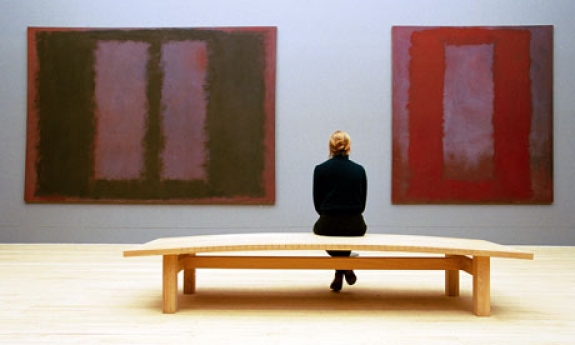The set of Mark Rothko paintings originally commissioned for the Four Seasons restaurant in New York are the treasure of Tate Modern. They occupy a room of their own, low-lit and filled with brooding intensity. The hazy outlines of what might be doors, windows, or the gates of heaven and hell hover on the wine red and imperial purple surfaces of Rothko's mural-scale abstractions. In all of them darkness beckons, mordantly inviting the beholder to imagine vast apocalyptic landscapes, undefinable events on a cosmic scale.
Almost everyone who enters the room feels an urge to sit down on the benches in the middle of the space. It's as if the emotional weight of these sombre works instinctively makes you sit, instantly drained by them. Before you even have time to try to compose a rational understanding of them, they have a psychological impact.
Rothko was a fan of the book The Birth of Tragedy by German philosopher Frederick Nietzsche. In this provocative 19th-century work, Nietzsche argues that ancient Greek tragedy grew out of the rites of the god of wine and ecstasy, Dionysus. When he was planning his paintings for the Four Seasons restaurant in the Seagram Building in Manhattan, Rothko toured Italy. He went to Pompeii and studied the ancient Roman murals there. Deep reds, abstract and empty, and illusory depictions of doors leading to spaces beyond, are characteristic of ancient Roman fresco painting. But perhaps the most tantalising potential source of Rothko's cycle of paintings is the Villa of the Mysteries in Pompeii, where people are depicted celebrating a Dionysian mystery cult against rich red backgrounds. It seems to me that Rothko, a reader of Nietzsche, must have seen connections here between deep red and black walls and the idea of art as a tragic Dionysian experience that opens up the imagination like a raw wound.



